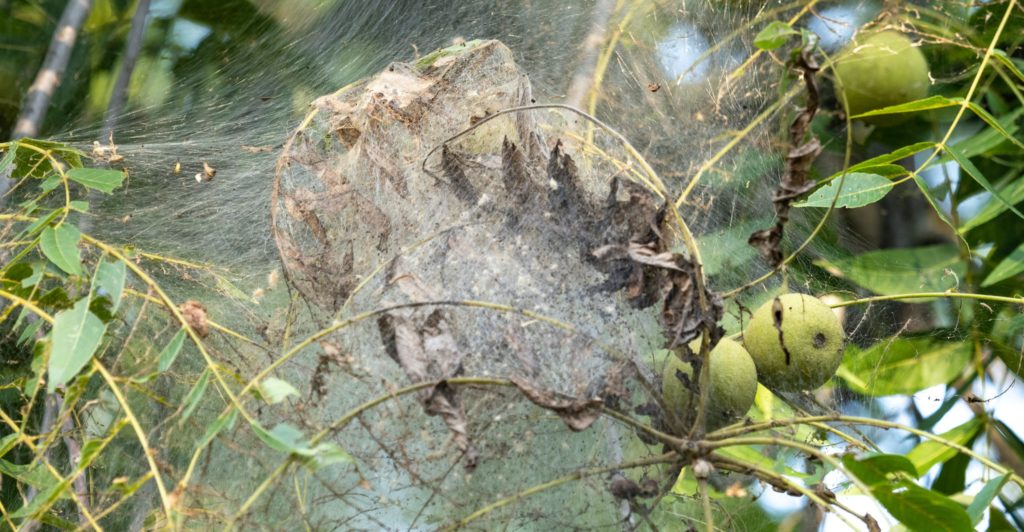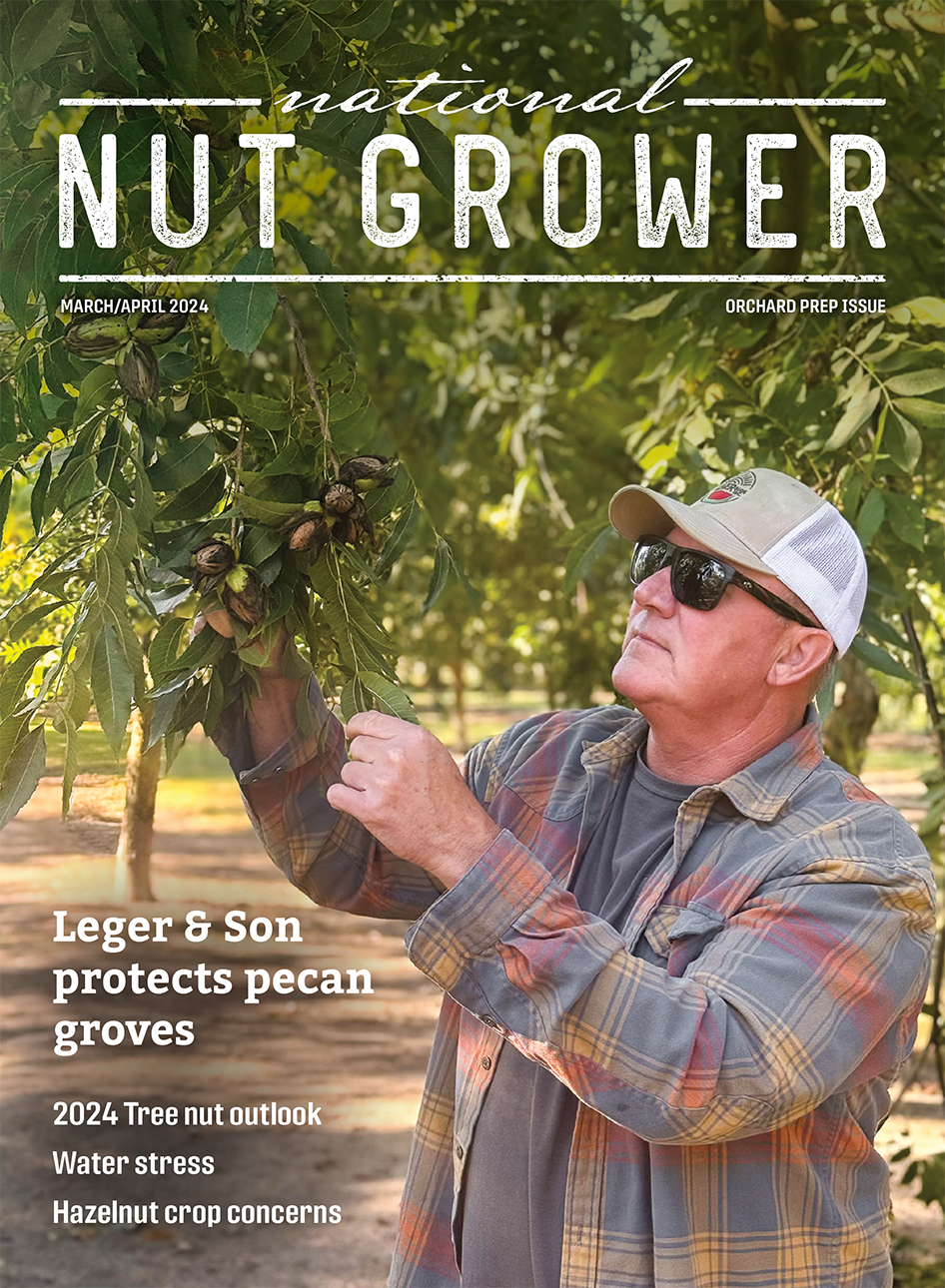
Aug 17, 2021Pecan trees prone to bagworm, webworm infestations in Oklahoma
In Rogers County, Billy Clark stood in his pecan orchard surveying the thousands of bagworm sacks hanging from tree branches.
Bagworms and webworms are a common sight on trees and other plants in late summer, but why they are more prominent in certain years is a mystery. One is mostly harmless to host plants while the other can be quite destructive.
Clark spoke recently on Oklahoma State University’s SUNUP television show about how he contacted Oklahoma State University (OSU) Extension when he noticed the severe infestation.
“I was under the impression they only attacked cedar trees, but to my alarm, that’s not the case,” Clark said.
Although he doesn’t expect much of a crop this year thanks to a spring freeze, he wonders if the bagworms will affect pecan tree yields next season.
Becky Carroll, an OSU Extension fruit and nut specialist, said many growers who annually manage their crops for an insect called the pecan nut casebearer don’t see bagworm problems. Insecticides applied in late May or early June for the pecan nut casebearer can also effectively control bagworms and webworms, but extreme weather has played a role in the recent bagworm uprising.
“The past two years, we’ve had early fall freezes and late spring freezes, so some of our producers who’ve lost their crop haven’t been spraying for pecan nut casebearer,” Carroll said. “Once you miss a couple of years, those bagworm populations start to build.”
Bagworms will feed on foliage and are active year-round, said Eric Rebek, an OSU Extension entomology specialist. Males and females mate, die and leave their eggs in the unsightly bags that hang from tree branches. The bags, made of foliage the worms have weaved together with silk produced by special glands, are used for protection and are typically seen on cedars, junipers and other evergreen trees.
This year, the bagworm population has increased to the point they are now expanding their host range to other plants, such as rose bushes and oak trees. Rebek said it is difficult to identify one factor that creates such an abundance.
“It’s something with the environment, weather or moisture related, that affects what they feed on as well as their natural enemies, such as predators, parasites and pathogens,” he said. “It’s a complex interaction that determines the ups and downs of their population cycle we see over time.”







